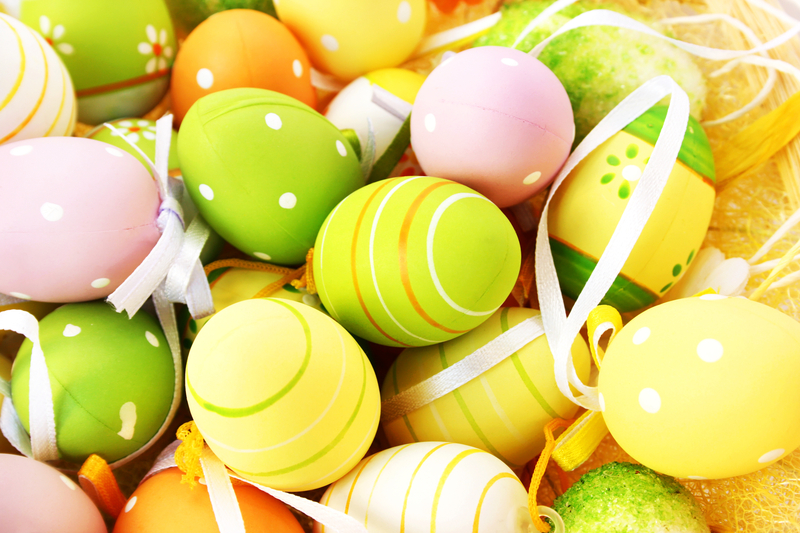We just celebrated Easter this past weekend, but why April 7th? Easter was April 17th in 2022 and will be on March 31st in 2024. Why does it move around? After all, it commemorates the resurrection of Jesus and if you accept that he did rise from the dead, he did that only once and on a specific day. Christmas is on December 25 while Independence Day is always July 4th and Veteran’s Day is November 11th. So why does Easter move around?
The formal celebration of Easter takes place the first Sunday after the Paschal Moon, which is the first full moon after the Vernal Equinox. The celebration of Easter follows the Jewish celebration of Passover. The “Last Supper” was the celebration of Passover by the Jewish Jesus and his disciples. Passover takes place in the Hebrew month of Nisan. The Hebrew calendar is a lunar one which makes for a slightly shorter year than the Gregorian calendar so while the celebration occurs at the same time mid-month of Nisan, because the calendar is based on the moon cycles it “moves around” on our calendar. As a result of the Christian desire to continue the Passion tradition of the Last Supper, trial by the Sanhedrin and his subsequent crucifixion Easter continues to be loosely linked with Passover on the calendar.
Several secular traditions have arisen around Easter, some have forgotten religious origins. Eggs symbolize new life, as does the resurrection of Christ and so they became associated with Easter celebrations. Reformer Martin Luther, the founder of the Lutheran religion, was the first to sponsor Easter egg hunts. The hunt was to symbolize the discovery of the empty tomb of Jesus and thus new life in Christ for all of us. There is a question, based on readings of Scripture, who were the women who discovered the empty tomb. Clearly there was Mary Magdalene, Mother Mary and her sister-in-law Mary the mother of James. The passage may also be read to include a fourth woman named Salome, although most biblical scholars believe it was only the trio of Mary’s who visited Christ’s tomb. The reason for “sunrise services” is because the women went to the tomb as soon as the Jewish Sabbath was over – at sunrise – in order to anoint the body of Jesus, whom they believed was deceased and resting in the tomb.
If eggs represented life, the colors they were decorated with had meaning as well. Yellow was symbolic of resurrection while red was indicative of the blood of Christ and blue represented love. Rabbits became associated with Easter, specifically an Easter Bunny who laid eggs for two reasons.
First, rabbits are incredibly prolific so once again they represent life as does Spring. The Earth comes back to life after winter, Christ comes back to life after death while eggs and rabbits symbolize fertility. Second, pagans celebrated the holiday of the goddess Eostre (pronounced easter) at the spring equinox. Her sacred symbol was a hare that laid eggs. German immigrants who moved to Pennsylvania in the 1700’s brought the tradition of the “Osterhase” an egg laying rabbit and so the Easter Bunny was introduced to the United States.
Hot cross buns used to be an Easter staple, along with ham at dinner. Lamb was considered a “Jewish” dish, so Christians had ham. Pigs were slaughtered in the fall and were slow smoked making spring the perfect time to consume a ham. Hot cross buns initially symbolized the phases of the moon for pagans but came to represent a depiction of the Cross for Christians.
The tradition of the White House lawn Easter egg roll began in 1878. President Benjamin Harrison was in the habit of walking around Washington, D.C. for exercise and the kids he ran into on his walks requested the event. He was a grandpa and a kind man, so he said “yes”, and presidents have been hosting a similar experience ever since.
Another Easter tradition is the candy PEEPS. They were invented in the 1950’s by candy maker Sam Born of the Just Born candy company. The very first PEEP took twenty-seven hours to manufacture. Now PEEPS roll off the assembly line every six minutes.
Whatever your Easter traditions and religious persuasions, I hope you had a blessed Easter and hopefully you now have a better understanding of why we do the things we do for this holiday as well as why Easter moves around like it does.


